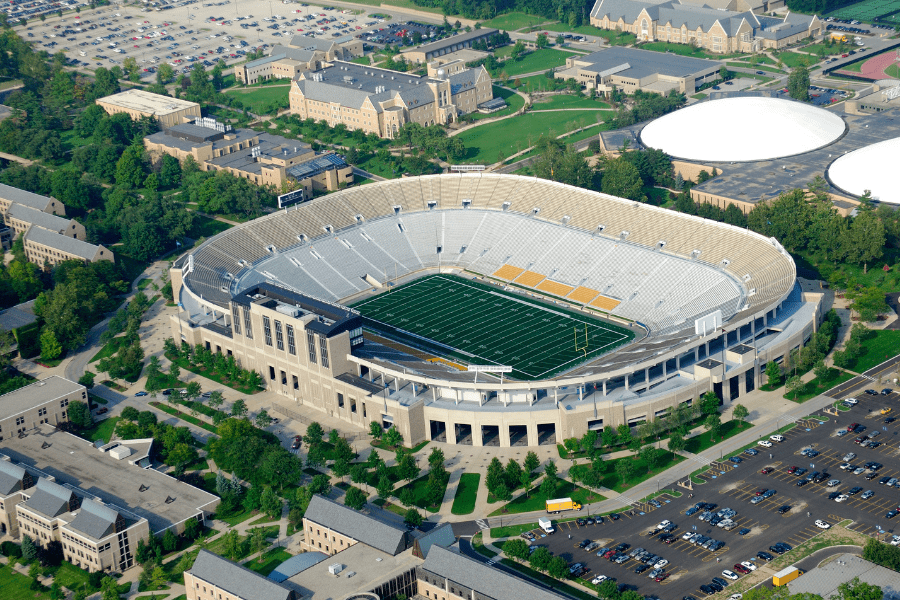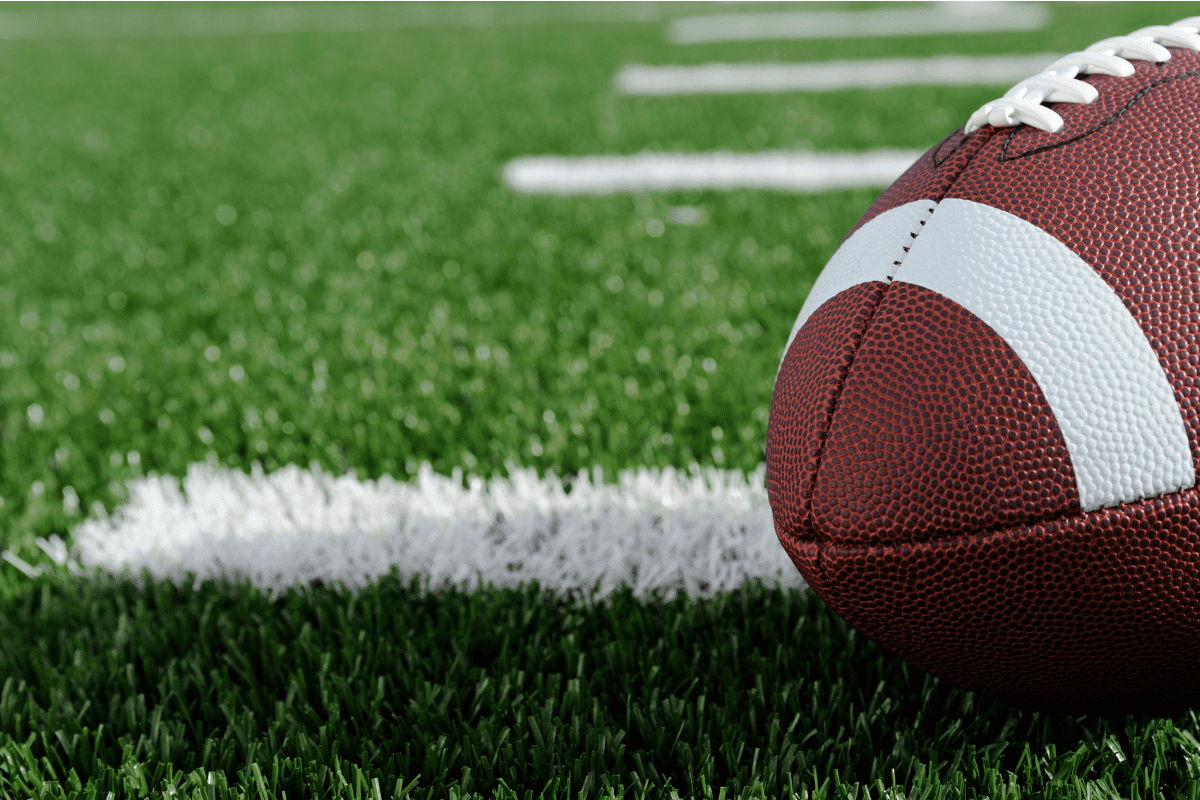What’s a Good Short Shuttle Time for College Football?
The Short Shuttle Test (also called a Pro Agility Test or a 5-10-5) is one of the standard tests used to measure the agility and change of direction of college football players (and athletes in general). It’s performed at the NFL Combine each year with the top college prospects in the country as well as at schools and camps all over the country.
I went through 20 years of data on college football short shuttles with teams that I’ve worked with, combined with numbers from other strength coaches, and have broken it down by position into ranges of what’s considered “good”.
Before we get into the numbers, please understand that “good” is very relative.
For example, if you’re a high school sophomore you most likely will not stack up to the numbers listed below and that’s okay. You still have a lot of development and maturing to do and your short shuttle will improve quite a bit over the next couple of years with proper training.
Also, you’re going to find a difference depending on what level of college football you’re examining. Average times at an SEC school are generally going to be lower than what you may find at a D2 or D3 school.
Next, while these are broken down by position, size is still a huge factor when evaluating what a good 40 time is. I’ve coached Defensive Ends who were 215 pounds and I’ve coached Defensive Ends who were 285 pounds. All else being equal, a 215-pound athlete is likely to have a much better 5-10-5 time.
Pro Agility Numbers By Position
| College Football Short Shuttle Ranges by Position | |||||
| Position | Reserve | Starter | All-Conference | All-American | NFL Athlete |
| Quarterback | > 4.67 | 4.57 – 4.67 | 4.45 – 4.56 | 4.35 – 4.44 | < 4.35 |
| Running Back | > 4.56 | 4.48 – 4.56 | 4.39 – 4.47 | 4.30 – 4.38 | < 4.30 |
| Wide Receiver | > 4.54 | 4.48 – 4.54 | 4.36 – 4.47 | 4.28 – 4.35 | < 4.28 |
| Tight End | > 4.67 | 4.57 – 4.67 | 4.47 – 4.57 | 4.36 – 4.46 | < 4.36 |
| Offensive Line | > 5.09 | 4.97 – 5.09 | 4.84 – 4.96 | 4.74 – 4.83 | < 4.74 |
| Safety | > 4.56 | 4.49 – 4.56 | 4.37 – 4.48 | 4.29 – 4.36 | < 4.29 |
| Cornerback | > 4.53 | 4.45 – 4.53 | 4.35 – 4.44 | 4.25 – 4.34 | < 4.25 |
| Linebacker | > 4.64 | 4.55 – 4.64 | 4.45 – 4.54 | 4.36 – 4.44 | < 4.36 |
| Defensive Ends | > 4.73 | 4.64 – 4.73 | 4.54 – 4.63 | 4.44 – 4.53 | < 4.44 |
| Defensive Tackles | > 5.06 | 4.97 – 5.06 | 4.86 – 4.96 | 4.77 – 4.85 | < 4.77 |
What Do The Categories Mean?
The terminology I used for each category was Reserve, Starter, All-Conference, All-American and NFL Athlete. These are just categories that I found resonated well with our players. They don’t carry any deeper analytical meaning though. They could easily be Elite, Above Average, etc.
Where Do These Numbers Come From?
The number ranges are rooted in historical data that I’ve accumulated over the course of my career.
Other input like NFL Combine Data, testing data that our coaching staff had acquired in their careers and feedback we received from peers in the strength and conditioning field are also considered.
Finally, when looking at the category ranges understand that they are not designed to be evenly distributed. Most of the guys on our team would fall into the Starter or All-Conference categories (freshmen often fell into Reserve or Starter). Fewer players would achieve All-American level and fewer still would reach NFL Athlete.
Is The Short Shuttle Tested at College Camps?
If you’re planning on attending a college camp, it can be very beneficial to know what you’re going to be tested in.
Almost all college camps that I’ve been a part of have tested the Broad Jump and the 40.
When it comes to the Short Shuttle – it’s about 50/50. Some colleges will test it and others won’t.
It’s not that colleges don’t find the short shuttle a good test. It’s definitely helpful data if you can get it. The problem is usually a logistical one.
Many college camps have hundreds of athletes that attend. I think the biggest camp I worked had around 700 players at it.
To get through testing in a timely fashion, you need multiple stations of each drill set up. This means there may be 8 Broad Jump stations and 8 lanes of 40s being ran.
Running all these stations takes manpower. Someone to help get guys organized. Someone to run the drill. Someone(s) to time. Someone to record.
If you’re going to add a drill, you’re not just adding one drill. You may be adding 8 of them and you might need another 25 people to make it run smoothly.
With all that being said, if I were advising a high school football player on what to prepare for I would suggest the 40 and the Broad Jump. For what it’s worth, the short shuttle would be third.
Bonus Tips for Attending a College Football Camp

I want to leave you with a few tips if you’re planning on attending a college football camp.
I’ve probably done over 100 camps and been in the room with football staff as we evaluate the players we saw at camp that day. Some of the same things always come up that have nothing to do with physical ability. I want to share a few of those with you to hopefully give you an edge at your next camp.
When Possible, Be First in Line
You don’t need to be obnoxious and start a scuffle with other players, but if at all possible, try to be first in line. Do that consistently enough throughout the day and you’ll catch the attention of coaches.
Be Positive
You may have a bad play. You may slip during a drill. You may have hated what they served for lunch.
Don’t let those kinds of negative things affect your attitude. Try to always stay positive, encourage your fellow campers and have fun playing football.
Work Hard at Everything
No football player (that I’m aware of) has ever been recruited because coaches thought they were cool. While other players are going through the motions during the warm-up, listen and execute each movement.
When doing a drill that might not apply to “your position”, don’t blow it off. Look at every drill as an opportunity to get better and it will get noticed.
I’m not saying doing those things is going to get you a scholarship. Let’s be honest, if you run a 6.48 in the 40 those things aren’t going to help that much.
What I am saying, is every year I see a few players who got onto our recruiting boards because we thought they would make a positive influence on the culture of our team. It happens.
Final Thoughts
The Short Shuttle is one of the most popular physical tests done at the college football and NFL level and I don’t see that changing anytime soon. Knowing what a good Short Shuttle time is at your position is a great way to set goals and use them as motivation.
Just remember, if you’re still a few years away from college, your numbers may still have a lot of improvement left to go, but don’t let that discourage you! Work hard, work smart and you’ll see your short shuttle continue to improve.
If you found this guide helpful, make sure to check out my similar guide on 3 Cone Drill times.

